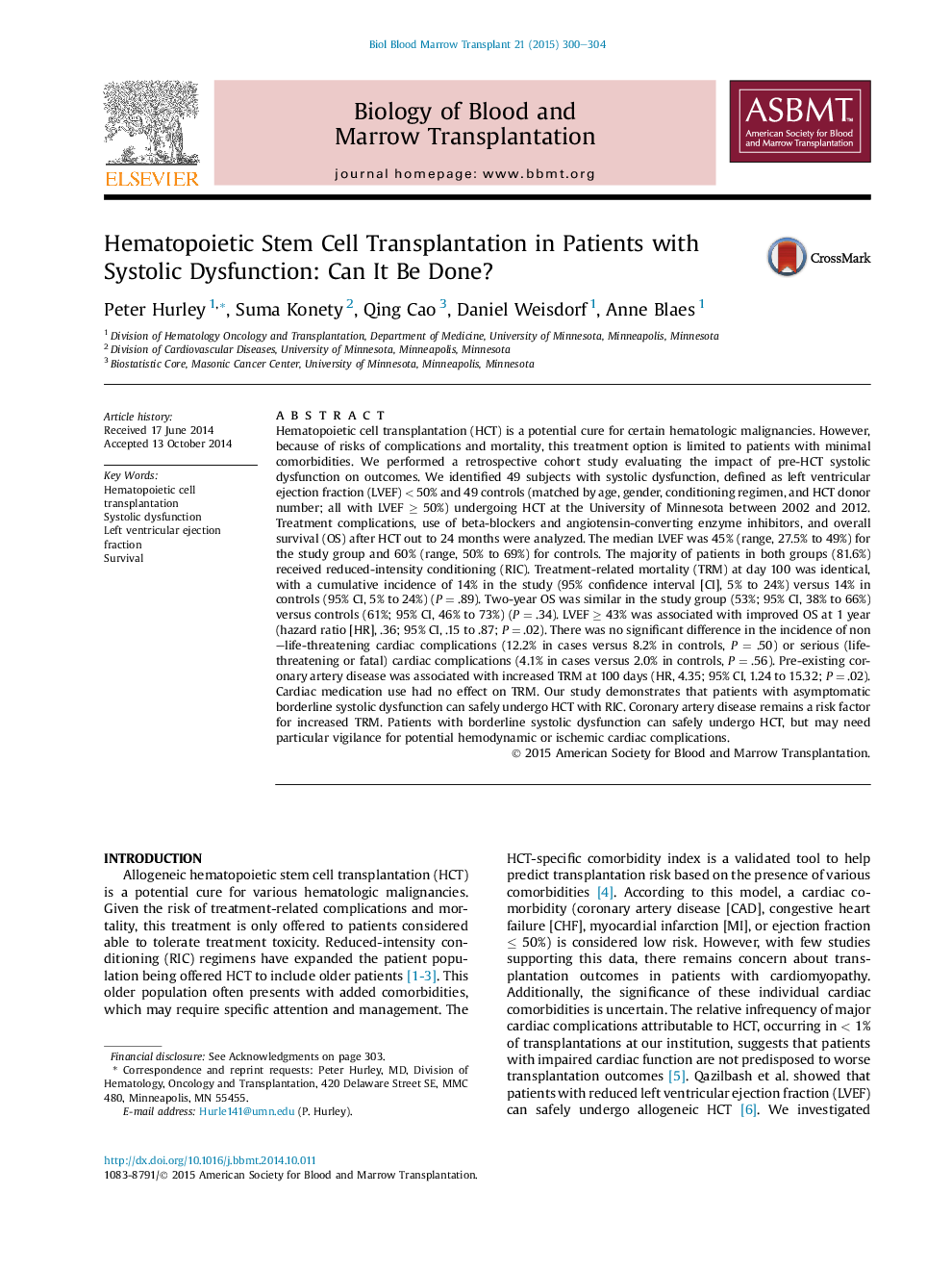| کد مقاله | کد نشریه | سال انتشار | مقاله انگلیسی | نسخه تمام متن |
|---|---|---|---|---|
| 2102979 | 1546270 | 2015 | 5 صفحه PDF | دانلود رایگان |
• The transplantation population is aging and, therefore, more likely to have comorbidities.
• Our retrospective cohort study showed that subjects with borderline systolic dysfunction had similar transplantation outcomes to those without systolic dysfunction.
• Coronary artery disease was associated with worse outcomes.
• Patients with more severely depressed left ventricular ejection fractions (≤43%) had worse transplantation outcomes.
Hematopoietic cell transplantation (HCT) is a potential cure for certain hematologic malignancies. However, because of risks of complications and mortality, this treatment option is limited to patients with minimal comorbidities. We performed a retrospective cohort study evaluating the impact of pre-HCT systolic dysfunction on outcomes. We identified 49 subjects with systolic dysfunction, defined as left ventricular ejection fraction (LVEF) < 50% and 49 controls (matched by age, gender, conditioning regimen, and HCT donor number; all with LVEF ≥ 50%) undergoing HCT at the University of Minnesota between 2002 and 2012. Treatment complications, use of beta-blockers and angiotensin-converting enzyme inhibitors, and overall survival (OS) after HCT out to 24 months were analyzed. The median LVEF was 45% (range, 27.5% to 49%) for the study group and 60% (range, 50% to 69%) for controls. The majority of patients in both groups (81.6%) received reduced-intensity conditioning (RIC). Treatment-related mortality (TRM) at day 100 was identical, with a cumulative incidence of 14% in the study (95% confidence interval [CI], 5% to 24%) versus 14% in controls (95% CI, 5% to 24%) (P = .89). Two-year OS was similar in the study group (53%; 95% CI, 38% to 66%) versus controls (61%; 95% CI, 46% to 73%) (P = .34). LVEF ≥ 43% was associated with improved OS at 1 year (hazard ratio [HR], .36; 95% CI, .15 to .87; P = .02). There was no significant difference in the incidence of non–life-threatening cardiac complications (12.2% in cases versus 8.2% in controls, P = .50) or serious (life-threatening or fatal) cardiac complications (4.1% in cases versus 2.0% in controls, P = .56). Pre-existing coronary artery disease was associated with increased TRM at 100 days (HR, 4.35; 95% CI, 1.24 to 15.32; P = .02). Cardiac medication use had no effect on TRM. Our study demonstrates that patients with asymptomatic borderline systolic dysfunction can safely undergo HCT with RIC. Coronary artery disease remains a risk factor for increased TRM. Patients with borderline systolic dysfunction can safely undergo HCT, but may need particular vigilance for potential hemodynamic or ischemic cardiac complications.
Journal: - Volume 21, Issue 2, February 2015, Pages 300–304
